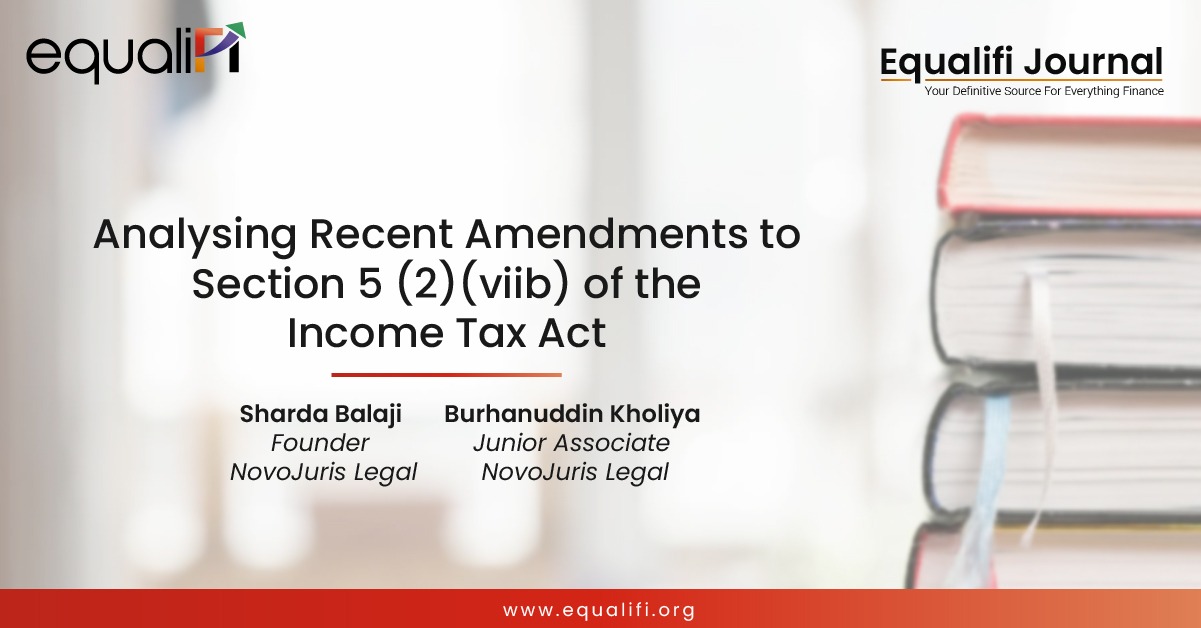The Role of IBC in Mergers & Acquisitions (M&A) – An Analysis of the legal framework in India
Posted on: June 12, 2023 | By: Aniket Saxena Financial Advisor
Keywords: IBC, Insolvency, Bankruptcy, Distressed M&A, Liquidation, Restructuring.
Introduction
The Insolvency and Bankruptcy code, 2016 (IBC) has gently progressed but, following several alterations, now offers a value path for M&A transactions. Corporate insolvency prior to 2016 was a disarranged process but the IBC brought a welcome change from the current situation, offering sturdy & timeframe solutions. Business transactions bloom on solidity, transparency & loyalty & each change to the IBC nourished obscurities, allowing it to become clearer & more constant. M&A transactions under the IBC are clearer & benefit from a time-limited mechanism that is free from the risk of existing & unknown liabilities blocking acquisitions.
IBC as a Producer for M&A Activities
The Insolvency and Bankruptcy Code, 2016 (IBC) is a milestone legislation for the reorganization & liquidation of persons combining the regulatory framework governing (including incorporated/unincorporated entities). The previous liquidation system before the affiliation of the IBC focused more on shutting down of the corporate body in release of its debt, whereas the IBC lays importance on keeping the entity as a “going concern” with further stress on commercial determination over judicial determination. The code is deliberate to revive sick corporates as far as possible & if the revival is not possible, then to liquidate them.
A Corporate Insolvency Resolution Process (CIRP) can be inducted against the corporate debtor on default of repayment of debt by financial or operational creditors. Following the induction of CIRP, a moratorium period is declared by the tribunal during which creditor action will remain stayed, while the bankruptcy court takes a view on the possible chances of recovery & all legal actions are barred or stayed as they can may be. Once Corporate Insolvency Process is initiated under the Code, any trained resolution applicant can submit resolution plan to the Insolvency professional for comeback of the company. The anomaly of the Code gives broad options for mergers/demergers by sale of company or its business/undertaking to outside public.
Further a resolution plan is invited by the resolution applicant & has been defined in Section 5 (26) of the IBC Code 2016 as:
“a plan proposed by resolution applicant for insolvency resolution of the corporate debtor as a going concern in accordance with Part II
https://ibbi.gov.in/uploads/legal
i.e.: For removing of doubts, it is hereby clarified that a resolution plan may include facilities for the reorganizing of the corporate debtor, including by way of merger, amalgamation and demerger.”
The resolution applicant, being any person(s), can thereby offers a distressed merger or amalgamation of the corporate debtors with other organizations. Several remissions are given to ease such resolution & once such resolution is approved by the Committee of Creditors (CoC), the contents of resolution plan are bolstered by judicial approval vindicating the requirement to maintain the entity as a “going concern” for escalation of the value of the corporate debtor.
The CIRP Resolution Plan may include sizeable acquisition of shares of the corporate debtor, or the merger or strengthening of the corporate debtor with one or more persons; transfer of all or part of the assets of the corporate debtor to one or more persons, among other things.
Regulation 32 of the Insolvency and Bankruptcy Board of India (Liquidation Process) Regulations, 2016 states:
“The liquidator may sell –
- a) an asset on a standalone basis; b) the assets in a slump sale; c) a set of assets collectively; d) the assets in parcels; e) the corporate debtor as a going concern; or f) the business(s) of the corporate debtor as a going concern…”
Further, Regulation 29(3) of Insolvency and Bankruptcy Board of India (Insolvency Resolution Process for Corporate Persons) Regulations. 2016 states:
“A genuine purchaser of assets sold under this Regulation shall have a free & marketable title to such assets despite the terms of the fundamental documents of the corporate debtor, shareholders agreement, joint venture agreement or other document of a similar nature. “
This deemed sanctity before law creates Mergers & Acquisition (M&A) opportunities for an acquirer to acquire assets during the insolvency & yet, boundary the acquisition from future legal challenges.
A M&A opportunity may also come to light as a part of the CIRP when a Resolution Plan is invited by the Resolution Professional. The plan can provide for:
- Transfer of all or part of the assets of the corporate debtor to one or more persons;
- Sale of all or part of the assets whether subject to any security interest or not;
- Substantial acquisition of shares, or the merger or consolidation of corporate debtor with one or more, persons.
A M&A opportunity could also appear following the CIRP when as part of the Resolution Plan, the Resolution Applicant has taken consent to divest all or parts of the corporate
http://www.argus-p.com/papers-publications/thought-paper/distressed-ma-under-ibc
Section 37, IBBI (Insolvency Resolution Process for Corporate Persons) Regulations, 2016 debtor’s assets through M&A activity over a pre-agreed period of time following the conclusion of the CIRP.
The efficiency of the Code in respect to its time frame for the recovery of the distressed assets & as an initiative to prevent the breakdown of value of such assets during the entire insolvency process makes it all the attractive M&A dealers in the market. The initial delay of investing in M&A has all the more receded with the effective information gathering during the CIRP helps in providing valuable insights into the distressed assets without much bother of the interested investors looking for opportunities. The IBC has driven massive M&A momentum in the country, led by deals involving Bhushan Steels (USD 7.4 billion), Reliance Communications (USD 3.72 billion), Fortis Healthcare (USD 1.23 billion). The IBC has accelerated activity in distressed merger and acquisitions (M&A) in India with the transaction involving Indian companies reaching $104.5 billion in 2018.
IBC – A feasible Answer for Mergers & Acquisitions
The Insolvency and Bankruptcy Code, 2016 (IBC) has unlocked numerous possibilities for merger and acquisition (M&A) deals in India for companies looking for inorganic growth opportunities. IBC activities provide corporate debtors with solutions against the liquidation process. Because of these reasons, it has opened new gates in M&A. According to the reports, till 2018, the M&A deals in distressed assets worth USD 14.3 billion were done in just 2 years of operations of the code. Indian economy is having rush in emphasized assets and it is no wonder that the complication of the problem has called for multiple changes to various laws and the introduction of several new ones.
The IBC attempts to save the life of a company in torment phase. One of the most remarkable tools introduced to address the problem of stressed assets is IBC. In terms of actual deals, distressed M&As have accounted for about 4% of the total M&A volume in the Indian market and 22 out of a total of 624 deals completed since 2017. An M&A opportunity could also appear as a part of CIRP when, as part of the Resolution Plan, the Resolution Applicant has taken consent to divest all or parts of the corporate debtor’s assets through M&A activity over a pre-agreed period following the closure of the CIRP.
During the past couple of years, India have observed quick resolutions for tackling non-performing stressed assets and debts in India, including its restructuring thereof, by providing a powerful tool to the financial and operational creditors in the form of the Insolvency and Bankruptcy Code, 2016. When looking at distressed M&A in the context of IBC, the following are the essential factors in the growth of distressed M&A activity:
- Time Frame for Dealing with Stressed Assets
One of the most attractive aspects of the IBC mechanism is the time period allotted to agree on the terms and deal with distressed assets of an insolvent business. The IBC provides stern timelines for the accomplishment of various stages of the process. The highest time period for resolution is 9 months including the grace period of 90 days. Although the process
www.livemint.com (IBC impact on M&A deals by Swaraj Singh – 29 October, 2018)
https://signalx.ai/blog/ibc-a-viable-solution-for-mergers-acquisitions/
sometimes outclass the above timelines, it’s still more effectual than the court-driven process. This means the process and valuations of the distressed assets are carried out faster than when it is carried out by Merging/Acquiring entities while overseeing personal due diligence on non-stressed assets.
- Due Diligence
It is one of the most important practices conducted during M&A. It is pledged by the merging/acquiring entity to assess the target entity’s business, assets, future economic potential, authenticity, and various notable factors to secure itself from future fiscal or lawsuit problems. It is most important for the merging/acquiring investor to exercise due care and caution while conducting the assessment. By pledging diligence, the acquiring entity makes sure visibility in order to determine the authenticity and validity of the target entity, which would protect itself from future financial, commercial, and legal problems.
Further, the diligence process has a remarkable bearing on the end result of the M&A transaction, in terms of the final commercials, proper reps & warranties to be obtained, consultation leverage, and investment decision. Often times even after meticulous due diligence has been conducted, litigation and financial issues still fall through the cleave, which makes the M&A transaction not favorable and annoying for investors. IBC with the beginning of the CIRP, suspends the Board of Directors of the distressed business (Corporate Debtor) and places the Insolvency Professional (IP) at the control of the organizational and re
venue management of the company as a going concern.
This is in order with the corporate resolution insolvency process cited in IBBI (Insolvency Resolution Process for Corporate Persons) Regulations, 2016 (CIRP Regulations) which suspends the powers of the Board of Directors, once the IRPs are appointed by National Company Law Tribunal (NCLT). So, with the adjournment of the Board of Directors, officers and managers of the corporate debtor are required to report to the IRP. This also means that it is the responsibility of the IRP to shield and look after the corporate debtor’s properties and manage the operations of the corporate debtor as a going concern.
If an appeal for insolvency is submitted to the NCLT by financial or operational creditors or the corporate debtor itself, and is admitted by the NCLT, then CIRP is initiated. There will be an Interim Resolution Professional (IRP) appointed with the approval of NCLT. The CoC will later vote and pick on who the IP will be (The IRP can be selected to be the IP by the CoC).
Various provisions of the Companies Act, 2013 & Securities and Exchange Board of India (SEBI) Regulations have forced duty on the director to practice due care and skill and to act in the best interests of the company while entering into business transactions. In this regard, reference may be drawn to the milestone decision of the Delaware Supreme Court in Smith v. Van Gorkom. The Court, in this case, held the board of directors to be grossly negligent and personally liable in approving a cash-out merger proposal that assured shareholders a premium of 39 – 62 percent over the market price without exercising reasonable care.
Further, the Court suggested that in cases where directors have failed to act in a probably sensible manner, they would enjoy no protection and can be held personally liable. Hence, conducting due diligence is important in M&A transactions. Therefore, in order to maintain the honesty of the complete process, it is vital that confidential information pertaining to the corporate debtor which can be accessed by any potential Resolution Applicant including competitors is kept sternly confidential.
The IBC acknowledges the importance of preserving the confidentiality and accordingly requires all Resolution Applicants accessing information about the corporate debtor to abide by with provisions of law for the time being in force relating to confidentiality and insider trading, safeguarding any intellectual property of the corporate debtor it may have access to and not to share pertinent information with third parties unless the above is compiled with. Some have described distressed M&A as an art.
It requires an exceptional skill set and a defined level of risk appetite. As the IBC is still at a relatively growing stage with several obscurities and un-predictabilities, one has to be careful in evaluating the potential risks and liabilities which may appear in the future, and also while formulating a resolution plan. Nevertheless, distressed M&As have their own benefits. Probably, an acquirer may get an asset at a lower valuation than in ordinary circumstances. We are at the beginning of distressed M&A deals under IBC and such deals are expected to only increase as the IBC system cultivates.
Conclusion
With the growth in offering of distressed M&A to the overall M&A growth, it is important that strategies are set in place which will increase the chances for the success of the transaction. While there are provocations, one will be able to control these by having the right expert who has the overall knowledge about the industry of the target and by placing effectual planning and strategy in order to make sure the successful closure of the transaction.








